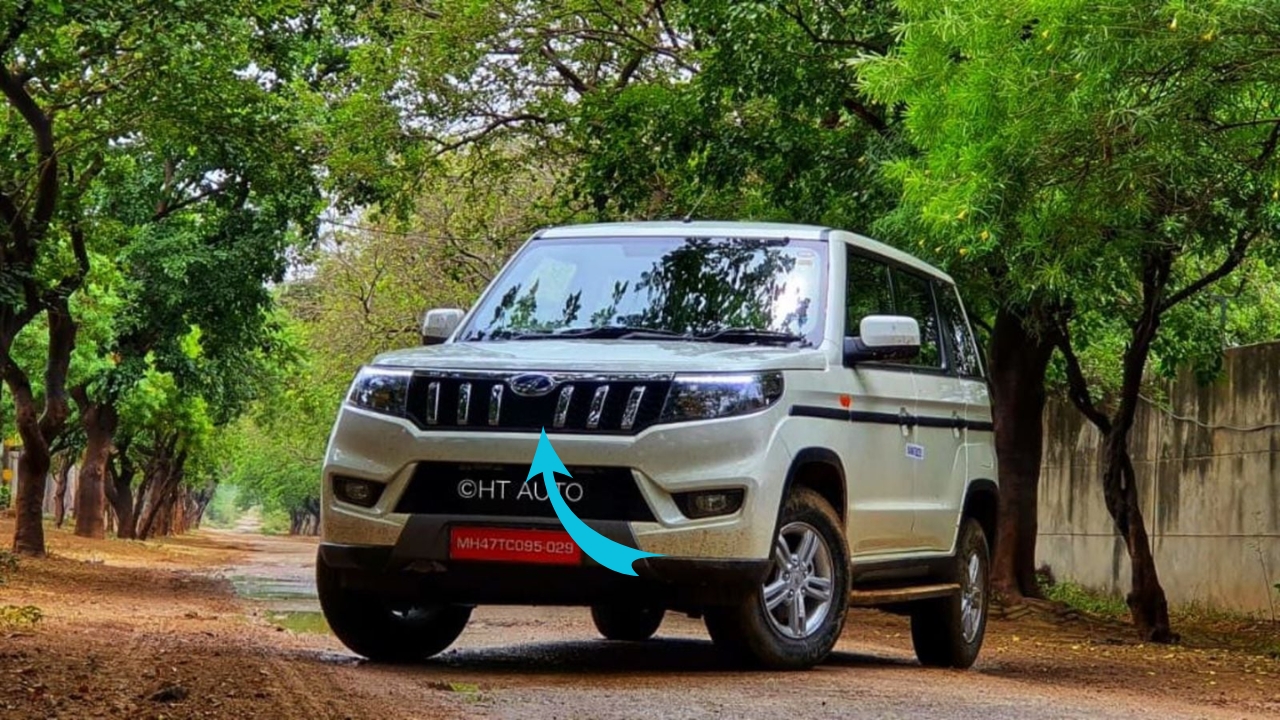Mahindra Bolero Neo: The Bolero Neo does have off-road credentials, which start with its most basic architecture, a body-on-frame construction that is mostly extinct in the compact SUV space.
The body-on-ladder chassis approach allows for advantages in tough conditions as the vehicle traverses terrain.
On the one hand, the frame is naturally stiff and resists flex over bumpy terrain, while the design more effectively absorbs and disperses the loads of extreme off-road use.
But since this construction method is quite a bit heavier than the monocoque designs the road-focused crossovers all seem to be built to, this comes with a trade-off, and that trade-off delivers significant benefits in terms of durability and
, most importantly, repairability, which may be a valuable asset in areas with limited service infrastructure.
Field reparability is more direct when components are bolted into an integrated structure, rather than welded, and bending damage that could total a unibody vehicle can often be fixed in body-on-frame designs.
The suspension system, however, likewise emphasizes capability above on-road sophistication. The front independent arrangement offers adequate articulation with acceptable on-road behavior, while the rear non-independent configuration delivers the toughness and load-carrying capability needed for vehicles that regularly carry heavy freight across inhospitable surfaces.
Third-generation Body Roll Control Technology also helps combat the meat-and-potatoes compromises of this configuration, reducing the lateral drift you find with traditional SUV designs.
Mahindra Bolero Neo : The Multi-Terrain Advantage
The biggest technical advantage the Bolero Neo has on paper — arguably its most undermarketed feature — is the mechanical locking differential that Mahindra calls Multi-Terrain Technology (MTT).
This system works seamlessly when wheel slip is detected, transferring torque to a wheel with traction instead of one spinning in place.
It’s a true engineering advantage over the brake-based electronic systems that most competitors deploy, which simulate traction by braking spinning wheels instead of literally redirecting power.
There are several advantages in real world off-road situations with that mechanical approach. It works without driver intervention, engaging automatically in circumstances where it is needed, and disengaging once traction has been restored.
This is unlike electronic systems that can overheat brake components with prolonged use, as the mechanical differential remains effective through long sections of arduous terrain.
Most importantly, it does deliver torque to wheels with traction rather than just limiting wheel spin—an important distinction when recovering a vehicle from really challenging scenarios.
It’s precisely this feature that defines the Bolero Neo against many competitors with a much higher price tag, yet it seems curiously underemphasized by Mahindra in its marketing materials.
Though the company spec MTT and emphasizes its mechanical advantages over the other companies’ simulated solutions (HOVs), they don’t paint it into a corner with much gusto for how different the ride quality feels on their vehicle versus simulated solutions from competitors—even missing a potentially critical differentiation from potential solutions in the marketplace.
Geometric Advantages
Aside from its mechanical systems, the qualitative aspects of the body of the Bolero Neo also help its off-road capabilities.
Approach angle (about 37 degrees), departure angle (29 degrees), and breakover angle (16 degrees) are all above typical crossover numbers, which means the vehicle should be able to get over obstacles that would hang up many competitors.
With 180mm of ground clearance — not fantastic in the world of proper off-roading 4x4s — you will find it acceptable enough for most off-pavement paths, as well as light trail work.
Also, shorter overhangs—especially at the front—help out more off-road by reducing the chances of scraping when climbing from flat to incline.
A big reason the vehicle is easier to get through narrow trails compared with larger SUVs is its compact external dimensions (4,371mm length), and a model-specific, relatively tight turning radius means that even on technical sections they can navigate easily between obstacles.
It all combines with the mechanical systems for a vehicle that can truly traverse harsh terrain, despite its understated style and visible affordability.
For buyers whose priorities center on real capability rather than image, these attributes amount to major value that more image-conscious competitors usually fail to equal, regardless of price.
Markers of Real-World Capability vs Marketing Images
While most modern SUVs are styled for the pavement, with ability off it more or less an afterthought, the Bolero Neo flips this hierarchy on its head — delivering a lot more than what its design promises.
This flies in the face of current market trends that favor aggressive off-road styling cueing that rarely correlate with true capability, but creates real value for those users who frequently travel beyond maintained roads.
It’s a particularly capable vehicle in challenges that are commonplace in rural India—rutted dirt roads, stream crossing, the slippery stretches that follow the monsoons and construction sites that resemble the surface of the moon.
It’s this combination of solid mechanical components that deliver decent ground clearance with the all-important mechanical locking differential that gets the knobbly-go resorts where more road-biased models with aggressive-looking bodywork often come a cropper.
This opens the door for fuel economy advantages for some user subsets like rural and semi-urban customers who repeatedly experience variable road scenarios.
Agricultural professionals, small business owners that service rural locations, and adventure tourism operators are all eaving up the utility of being able to reach places that would best and beat more road-based designs, providing actual utility rather than merely projecting an adventurous image.
Specification The user experience is more than the spec
For drivers who do explore beyond maintained surfaces, the Bolero Neo provides a reassuring experience that comes from fundamental engineering rather than electronic meddling.
The chassis imparts surface changes without unnecessary harshness, and the engine’s torque characteristics — peaking at relatively low RPM with no crazy top end to wring out — are perfect for technical terrain, providing controllable power delivery.
The higher seating position gives you a good view over the car’s corners to place the car precisely while squeezing between obstacles.
The controls also promote off-road use with their simplistic design. A throttle calibration that allows for precise modulation at low speeds, combined with a manual transmission that allows for direct control over gear selection without a computerized intermediary.
The steering is appropriately weighted in both low and high-speed scenarios, providing reasonable feedback without the need for excessive effort.
These features come together to produce a car that feels at home when conditions turn nasty rather than mouthing it, a difference that specs can’t show but that becomes evident as soon as you leave the black top.
For drivers who value this capability, the Bolero Neo has merit under the skin beyond its relatively restrained looks.
Mahindra Bolero Neo
But as regulatory requirements change and consumer preferences evolve, it is to be seen if vehicles like the Bolero Neo – which marries mechanical ruggedness with electronic simplicity – will continue to have a place in manufacturers’ lineups.
Raising safety and emissions standards also must lead to more complexity and higher cost, which could threaten the business case for mechanically straightforward but able vehicles at affordable prices.
At present, the Bolero Neo fills a unique space within the Indian market—offering authentic off-road ability without the cost outlay of a more familiar 4×4 brand name, nor the bulk and fuel consumption of their bigger SUV counterparts.
This places it perfectly for practical users who want its capabilities as well as enthusiasts on a budget who want accessible off-road performance without luxury pretensions.
As the car industry races on, machines like the Bolero Neo remind us that real-world capability often lies less in the world of marketing imagery and complex electronic wizardry and more in basic engineering and—and this is increasingly important as the gap between a automobile’s projected image and reality grows as certain sectors—goodness—a market place.



